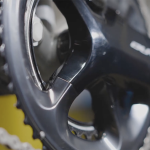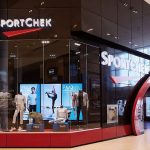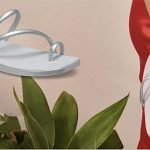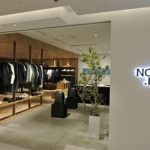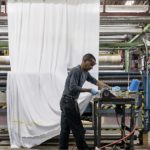Oxford Industries, Inc., the parent company of Tommy Bahama, Lilly Pulitzer, and Johnny Was, reported that it continued to progress on long-term strategic goals in the second quarter ended August 3 but fell short of delivering on its near-term financial targets.
“Sales of $420 million and adjusted EPS of $2.70 for the quarter were below our guidance range, primarily due to a continued pullback from the consumer,” said company Chairman and CEO Tom Chubb as he opened a conference call with analysts. “The pullback worsened sequentially during the quarter, coinciding with consumer sentiment hitting an eight-month low in July, with a trend continuing into August and the start of our third quarter.”
Chubb said that while most underlying economic indicators remain reasonably strong, the cumulative effect of several years of inflation may be catching up with the consumer. Simultaneously, he said the second quarter was also marked by several noteworthy national and global events that led to a more distracted consumer at several points over the summer.
“Certain factors that we believe may have amplified these headwinds with respect to our business include, first, our focus on affluent 45-and-up customers, who tend to be more headline and market sensitive; second, our significant exposure to Florida, which accounts for over a third of our brick-and-mortar business and grew at an exceptional pace coming out of the pandemic, but has slowed down as the new post-pandemic world settles in,” he noted. “And finally, some commercial and merchandising missteps on our part, including assortment misses and timing of promotional events.”
Chubb said the business slowdown they experienced was driven by reduced conversion. Traffic has remained strong, indicating that consumers are very interested in the company’s brands but have become cautious when making purchasing decisions.
He continued in his opening remarks, noting that, across the marketplace, the two areas where the consumer continues to respond positively are newness and value.
“During the quarter, we saw a strong full-price response to fashion and new and differentiated products, while interest in core sales was more muted,” Chubb said. “The consumer also responded to value in the quarter, with a higher proportion of sales during the quarter occurring during promotional events and at our outlet stores than in last year’s second quarter.”
The higher proportion of off-price selling to full-price sales reportedly put pressure on gross margins versus expectations. Chubb said this issue and lower-than-anticipated sales resulted in operating margin, operating profit and EPS below the company’s plan. However, Chubb said that the balance sheet remained strong.
“As Tom mentioned, there were several macroeconomic headwinds across the marketplace that negatively affected our financial results during the quarter, most notably lower consumer sentiment and an increase in the promotional environment,” added COO/CFO Scott Grassmyer.
“Despite these headwinds, our teams are focused on executing against our strategies of delivering newness and compelling products that resonate with consumers to combat these challenges and encourage full-price selling,” he continued.
In the second quarter of fiscal 2024, consolidated net sales of $420 million were comparable to the second quarter of fiscal 2023 but came in below the company’s initial guidance range of $430 million to $450 million.
“Notably, sales in our Outlets increased 4 percent as this channel benefited from consumers looking for deals and promotions, while sales in full-price brick-and-mortar locations were up 1 percent, driven by new stores and increased promotional activity partially offset by low-single-digit negative comps,” Grassmyer detailed.
- Full-price direct-to-consumer (DTC) sales increased 1 percent year-over-year to $305 million in the second quarter.
- Full-price retail sales amounted to $152 million in Q2, 1 percent higher than the prior-year Q2 period.
- E-commerce sales of $153 million were said to be comparable to last year’s Q2 period.
- Outlet sales were $21 million for the period, a 4 percent increase versus prior-year Q2 results.
- Food and beverage sales of $29 million in Q2 were also said to be comparable to last year’s second quarter.
- Wholesale sales of $65 million were reportedly down 5 percent year-over-year.
Chubb said the Wholesale channel, which was challenging in the first quarter of this year, had a difficult second quarter.
“As the Specialty Store business across our brands continues to struggle, partially offset by increased sales to major department stores, e-commerce and food and beverage sales were relatively flat compared to the second quarter of 2023,” the CFO noted.
Income Statement Summary
The gross margin for Q2 was down 80 basis points year-over-year to 63.1 percent on a GAAP basis, due primarily to full-price retail and e-commerce sales representing a lower proportion of net sales at Tommy Bahama, Lilly Pulitzer and Johnny Was with more sales during promotional and clearance events. A $1 million lower LIFO accounting charge partially offset the decline.
Grassmyer said Adjusted gross margin, which excludes the effect of LIFO accounting, decreased to 63.3 percent of sales in the quarter, compared to 64.3 percent on an Adjusted basis in the prior-year Q2 period.
“Across our three brands, we saw a strong response from consumers to our promotions, promotional and indices and clearance events. We were able to partially offset this decrease in our Emerging Brands Group through our continued efforts to improve our inventory position and reduce the need for off-price Wholesale and promotional direct-to-consumer sales,” he explained.
SG&A was $217 million in the second quarter, compared to $205 million in Q2 last year. This increase was driven primarily by expenses related to 30 new store openings since the second quarter of fiscal 2023, pre-opening expenses related to additional stores planned to open during the remainder of fiscal 2024, including four new Tommy Bahama Marlin Bars, and the addition of Jack Rogers brand acquired in the fourth quarter of 2023.
Adjusted SG&A expenses increased 5.7 percent to $213 million in the quarter, compared to $202 million in Q2 last year.
Grassmyer also said the company had incurred costs on some of the approximately 15 net new brick-and-mortar locations, including four Marlin Bar locations that Oxford expects to open in the second half of the fiscal year.
“Additionally, we incurred approximately $1 million in expenses, which are omitted from Adjusted SG&A and are associated with the relocation of the Johnny Was distribution center operations from Los Angeles to Georgia,” Grassmyer added. “We expect to incur an additional $1 million of charges related to the relocation in the second half of the year, but are projecting this move to save Johnny Was approximately $4 million in operating costs per year with potential for additional savings.”
Operating income was $53 million, or 12.5 percent of net sales, in the quarter, compared to $68 million, or 16.1 percent of net sales, in the second quarter of fiscal 2023. The decreased operating income includes the impact of lower gross margin and higher SG&A as the company continues to invest in the business.
Grassmyer said the result of these distribution actions yielded $57 million of Adjusted operating income, or 13.5 percent operating margin, compared to $73 million, or 17.3 percent of sales, in the prior-year quarter.
“The decrease in Adjusted operating income reportedly reflects the SG&A investments amidst a challenging consumer environment for sales and gross margin,” he said.
The effective tax rate was reportedly flat for the quarter.
All interest expense was $1 million lower compared to the second quarter of 2023, resulting from lower average debt levels.
EPS on a GAAP basis was $2.57 per share in the second quarter, compared to $3.22 per share in the second quarter of fiscal 2023. On an Adjusted basis, EPS was $2.77 per share in Q2, compared to $3.45 per share in the fiscal 2023 Q2 period.
Balance Sheet Summary
Oxford Industries decreased inventory by 6 percent year-over-year at quarter-end, or a decline of 13 percent ($13 million) year-over-year on a FIFO basis.
“The decrease in inventories resulted from our continued inventory discipline across our portfolio, said Grassmyer. “We’re also able to repay our remaining outstanding debt and ended the quarter within an $18 million cash position.”
“Inventories were down on a year-over-year basis to end the quarter, while strong cash flows allowed us to continue investing in the future of our business including investing in our store pipeline and Lyons, Georgia distribution center project,” added CEO Chubb. “For the balance of the year, we expect to continue to see a more cautious consumer and, accordingly, we have reduced our forecast for the year.”
Outlook
Oxford finished the second quarter of fiscal 2024 with negative comps of one percent, which was lower than its previous forecast for mid-single-digit positive comps for the quarter.
“Similar to the results we saw in the second quarter, comp sales figures in the third quarter to date are negative,” Grassmyer shared. “We believe the negative comp trend will continue and result in negative comps in the low- to mid-single-digit range for the remainder of the year, on top of similar comps in the prior year.”
Image courtesy Tommy Bahama






